Company Updates
Instacart Health: Our First Year of Impact
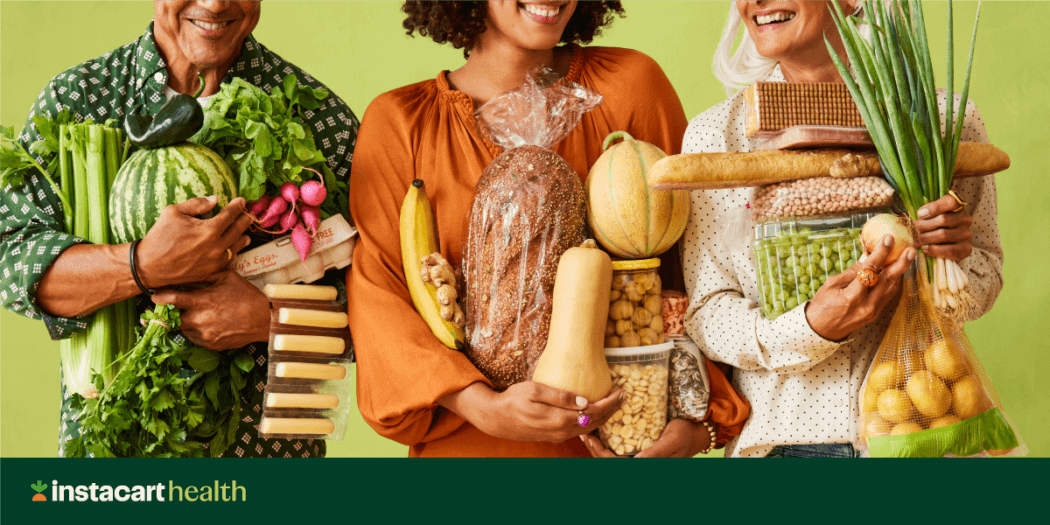
We launched Instacart Health a year ago. The concept of food as medicine has been around much longer, but over the course of the last year, there’s been a meaningful shift in the discussion. Now more than ever, the world is connecting food and nutrition to health outcomes — and putting efforts behind scaling food as medicine programs. And that’s what Instacart Health is all about.
Why we started Instacart Health
Right now, more than one in 10 Americans do not have reliable access to nutritious food, and more than 100 million people in the U.S. suffer from diet-related diseases. Annual national healthcare spending on diet-related diseases has topped more than $1 trillion a year — equal to all the money currently spent on groceries each year.
The healthcare community has been talking about the need for preventative medicine forever. But the frustrating truth is that for many diet-related conditions — like diabetes or high blood pressure — doctors still prescribe medication before prescribing an effective diet. A big part of the problem is that the tools to make it easy to prescribe a diet haven’t existed — this is what we’re building at Instacart. Another part of the problem is that insurance companies haven’t historically reimbursed the cost of nutritious food, but payers are beginning to turn towards food as medicine as they realize the economic advantages.
Using food as a tool to improve people’s health is a win-win — for patients and for the healthcare system overall. The financial opportunity is massive: if people’s diets improved, there could be more than $100 billion in savings for patients, taxpayers, providers and insurers, including employer-funded health plans and government-funded plans like Medicare and Medicaid. ¹
Our job at Instacart, when it comes to supporting the healthcare community, is to build the technology platform to provide scalable programs for providers, payers, hospital systems and more to put nutritious food in the hands of people in a convenient, accessible and affordable way.
What we’ve done
Our Instacart Health work falls into a few major categories:
Partnering deeply with payers and providers to scale food as medicine programs
At our core, we’re a technology company. So we’re using technology to help organizations make food as medicine and nutrition incentive programs more efficient, and bring them to more people.
Over the past 11 years, we’ve built a world-class consumer experience that is approachable, affordable and convenient for families across the country. Our work with insurers and providers is underpinned by our consumer tools that make medically tailored nutrition advice immediately actionable. With just a few clicks, healthy foods can arrive on patients’ and members’ doorsteps.
We’re working with insurers to help people stay healthier and reduce the cost of care.
Starting in 2024, we’ll be partnering with Medicare Advantage plans to offer their members Instacart benefits, including quarterly grocery stipends, Instacart+ memberships, and access to Instacart’s dedicated Senior Support Line. And in Kentucky, Good Measures and WellCare are making it easier for their Medicaid members to access a personalized nutrition plan that delivers recommended groceries directly to their homes using Instacart Health Care Carts.
Our products are dynamic and flexible, and can be used to support patients through every stage of their healthcare journey.
Over the last year, we’ve helped healthcare providers promote healthier choices, deliver nutritious food to patients and families, and provide more collaborative care. We recently launched a program with Mount Sinai Solutions — a division of Mount Sinai Health Systems — to use our customizable Instacart Health Fresh Funds stipends to cover the cost of healthy food, baby essentials and same-day delivery for patients recovering from major surgery or childbirth. We’re working with Boston Children’s Hospital to establish new food as medicine programs so pediatric patients can get the nutrition they need to manage and maintain their health. And we’re working with Medically Home — a hospital-at-home solutions provider — to bring nutritious foods as well as household and medical essentials directly to patients.
Our tools are also well-suited to support patients on medication regimens that require a specific diet. Early research shows that medications like GLP-1s can be effective in treating metabolic diseases, but they must also be supported by behavior and dietary changes.² Our technology provides patients with the tools they need — from nutrition information and recipe inspiration to meal planning and convenient ordering — to take action on their providers’ guidance and cement these long-term changes.
Expanding access and payment acceptance for nutritious foods online
Research has shown that online grocery helps low-income families — including SNAP households — overcome mobility challenges, stretch limited food budgets, reduce potential stigma associated with using benefits in-store and alleviate stress associated with mobility, transportation and childcare. Families who grocery shop online also purchase more fruits and vegetables than in-store shoppers, without increasing their total grocery bill, meaning more people are making more conscious, informed choices using our platform.
In 2023, after years of working with retailers and the U.S. Department of Agriculture, Instacart became the first online grocery marketplace to allow customers to pay with SNAP benefits in all 50 states and Washington, D.C. Now, almost 95% of the 42 million people enrolled in SNAP can buy groceries online and have them delivered right to their homes.³
Starting in 2024, we’ll also accept health benefit cards on Instacart, allowing people to use their supplemental health benefits from their health plan, including Medicare Advantage, Medicaid, and other eligible programs, to buy groceries and over-the-counter essentials for delivery. And we’re helping retailers of all sizes — many of which don’t have the resources or technical teams to build new payment integrations — to reach SNAP and health benefit participants to better serve their communities.
We’re also working with a number of nonprofits to launch new programs and reach more people — to ensure everyone has access to the nutritious foods they need.
We recently worked with Partnership for a Healthier America and the City of Indianapolis to give more families access to nutritious food. The pilot showed that our Fresh Funds technology helps increase nutrition security and makes it easier for people to build and sustain healthy habits: 79% of participants who received produce credits reported they planned to continue to eat more fruits and vegetables. Now the program is being expanded to Denver, Colorado; Englewood, New Jersey; Milwaukee, Wisconsin; and Washington, D.C.
We also built a tool called Community Carts, which reimagines traditional food drives — allowing anyone with internet access to easily donate the grocery items local food banks need most. Items are then delivered directly to the food bank by Instacart shoppers. So far, we’ve helped deliver over 76,000 items to more than 120 local Feeding America food banks across the country — including during times of elevated need or crises, including natural disasters.
Driving research that makes food prescription as precise as medication
We believe food as medicine can make people healthier and reduce the cost of care, and we want to prove it. That’s why we are working with integrated managed care systems, universities, medical centers and research foundations across the U.S. to use our technology to formulate specific food interventions that help people with certain conditions.
This work is well underway as we’re:
- partnering with Kaiser Permanente and collaborating with the Food is Medicine Institute at the Friedman School of Nutrition Science and Policy at Tufts University on a new study that will measure the impact of convenient access to nutritious foods on health outcomes for Medi-Cal members with diet-related diseases;
- teaming up with the Stanford Cancer Institute and University of California, San Francisco’s Helen Diller Family Comprehensive Cancer Center to examine the unique nutritional needs of colorectal cancer (CRC) survivors;
- working with a professor at the University of Kentucky and the Food as Health Alliance to study the impact of food-as-medicine programs on nutrition security, glycemic control, and blood pressure among pregnant women with diabetes as well as Medicaid recipients with hypertension or diabetes;
- testing a nutrition intervention program developed for families with young children at risk for obesity, including families living with low income with the University at Buffalo;
- and collaborating with the American Heart Association and Rockefeller Foundation to conduct research at scale to examine whether nutrition intervention programs improve health outcomes, close health equity gaps, and reduce the cost of care.
Looking ahead
A year into this work, I’m proud of the progress we’ve made, but we can’t stop until everyone has access to nutritious food and tools to support their health through nutrition. At Instacart, we’re determined to be the best infrastructure to scale these programs. But this work will continue to require cross-industry collaboration, with providers, payers, nonprofits, governments, and tech companies like us working together to solve the problem. It’s been a big year, but there’s so much more to do!
¹ This estimated net savings is based on 10 years of medically tailored meals interventions being provided to eligible patients. JAMA Network. October 2022. https://jamanetwork.com/journals/jamanetworkopen/fullarticle/2797397?resultClick=3
² “GLP-1 receptor agonists: an updated review of head-to-head clinical studies.” March 2021. https://journals.sagepub.com/doi/10.1177/2042018821997320
³ Based on the number of people in the U.S. enrolled in SNAP (USDA) in 2022. Instacart estimate (as of July 2023) based on the number of EBT SNAP households in areas serviced by EBT SNAP-enabled retailers on Instacart.
Most Recent in Company Updates
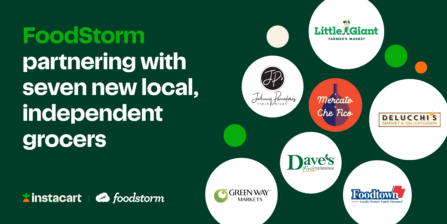
FoodStorm
Helping Local Independent Grocers Streamline Their Catering and Prepared Foods Businesses
Over the past few years, FoodStorm - our order management system (OMS) designed specifically to help grocers manage their deli, prepared foods and catering - has seen remarkable growth. And today, we’re excited to share…...
Apr 24, 2024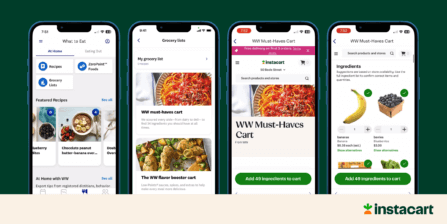
Company Updates
Making Nutritious & Delicious Choices Easier with Instacart and WeightWatchers
New WeightWatchers integration with Instacart unlocks ability to browse ‘Points’-friendly recipes, shop for ingredients, and get everything delivered to your door - now live in the WeightWatchers app In the hustle of everyday life, making…...
Apr 17, 2024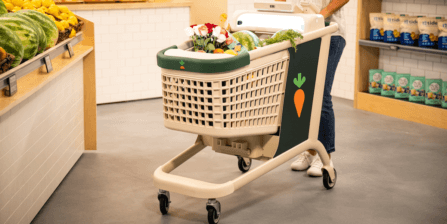
Caper
Why Smart Carts Are the Winning Technology Format for Grocers
One of the most common misconceptions about smart carts is that they only serve as an alternative to self-checkout. However, the real magic behind a Caper Cart, our AI-powered smart cart, is the digital screen.…...
Apr 9, 2024

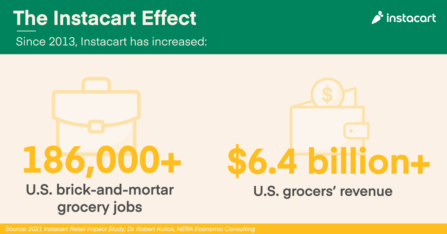 Instacart’s Impact on America’s Grocery Industry, by the Numbers
Instacart’s Impact on America’s Grocery Industry, by the Numbers 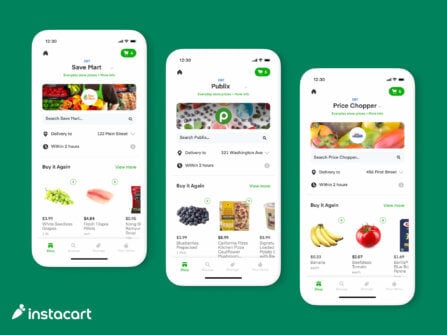 Breaking Down Barriers to Food Access with EBT SNAP Expansion
Breaking Down Barriers to Food Access with EBT SNAP Expansion  Beyond the Cart: A Year of Essential Stories
Beyond the Cart: A Year of Essential Stories 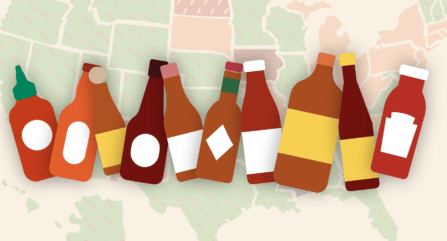 A Hot Take on America’s Favorite Hot Sauces 🌶
A Hot Take on America’s Favorite Hot Sauces 🌶  JuJu Smith-Schuster: What’s in my Cart?
JuJu Smith-Schuster: What’s in my Cart?  Introducing the First-Ever Instacart Emerging Brand List
Introducing the First-Ever Instacart Emerging Brand List 
